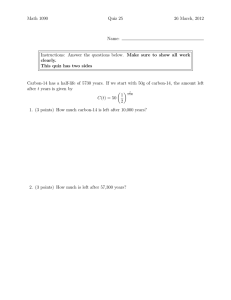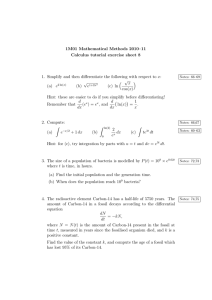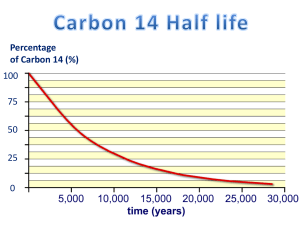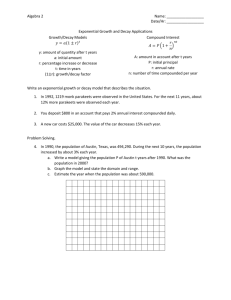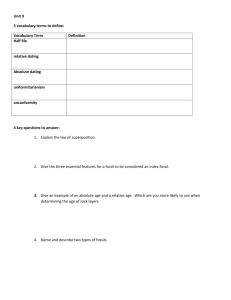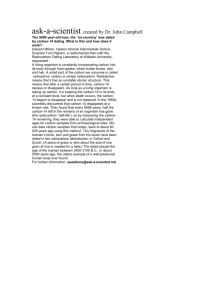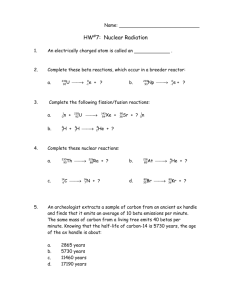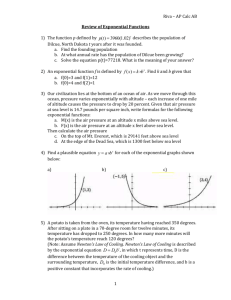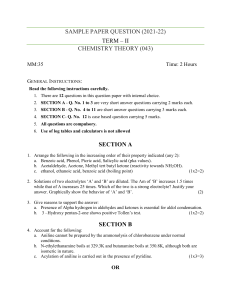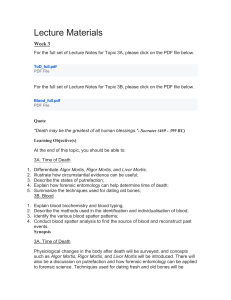Sample Problems Math 1100 13 November, 2013
advertisement
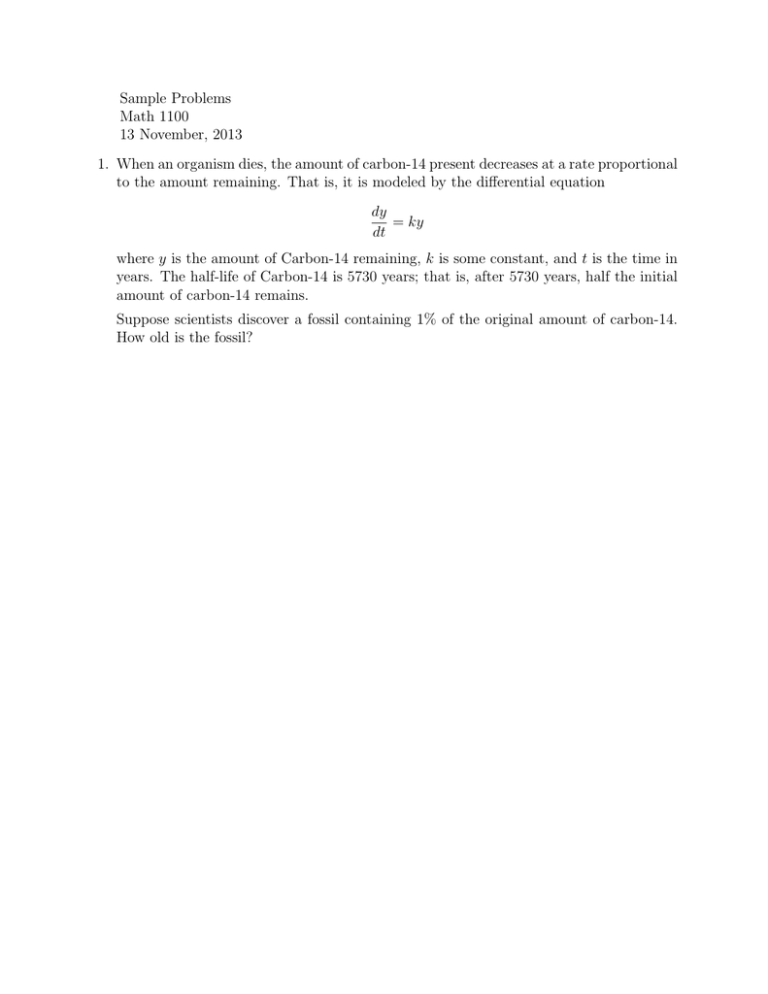
Sample Problems Math 1100 13 November, 2013 1. When an organism dies, the amount of carbon-14 present decreases at a rate proportional to the amount remaining. That is, it is modeled by the differential equation dy = ky dt where y is the amount of Carbon-14 remaining, k is some constant, and t is the time in years. The half-life of Carbon-14 is 5730 years; that is, after 5730 years, half the initial amount of carbon-14 remains. Suppose scientists discover a fossil containing 1% of the original amount of carbon-14. How old is the fossil? 2. When interest is compounded continuously, the rate of change of the amount of money x in an account is proportional to the amount present. That is, dx = rt dt where r is the interest rate (a constant) and t is the time in years. If $10,000 is invested at 6% interest, what will the value of the investment be after 5 years? Page 2 3. A certain population of bacteria grows according to the differential equation 1 dy · =k y dt for some constant k. If the population doubles every two hours, how long will it take to have 50 times the initial number of bacteria? Page 3
